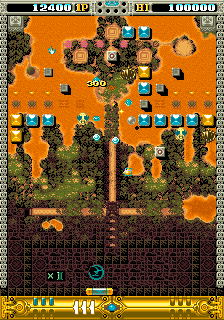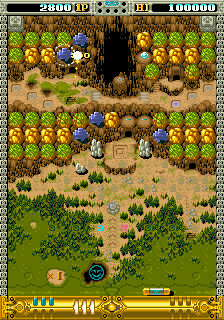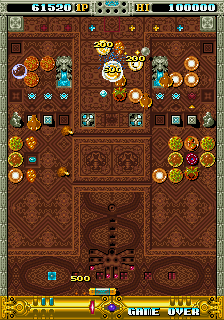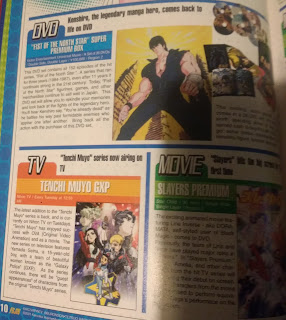There are two very important things to know about this game. First, it was never actually released, though the ROM surfaced online lin 2020, and was added to MAME in 2021. Second (and most important), when the legendary arcade magazine Gamest previewed it, they misread the logo on the title screen and referred to it as FARTS. Anyway, it's a brick-smashing game with a few interesting quirks.
Mechanically, there's quite a lot going on. The game solves the age-old problem the genre has of spending long agonising minutes trying to hit that last black to clear a stage by simply having a different goal. Instead of clearing every block away, you instead have to do ...something (I haven't entirely figured out the conditions, but I think they have to do with lighting various pinball-style rollover spots around the screen) that makes a boss appear, then kill the boss by hitting it with the ball repeatedly.
There's a few other little things in there too, like how you have limited-use magic, that has various effects like summoning an extra ball that kind of roams around breaking stuff, a bird thing that flies around attacking enemies, or a wave of energy that slowly descends the screen, stopping the ball from falling past it for a few seconds. There's also the fact that you can ram the sides of the screen at full speed to perform a pinball-style nudge, changing the ball's trajectory. Do it enough times in a single stage, and you'll smash through the wall, allowing you to insantly loop from one side of the screen to the other!
There's a lot to love about OOPARTS aesthetically, too! All the screens outside of actual gameplay look amazing, for a start. That is, the title screen, stage select, intermissions between stages, that kind of thing. Then the stages themselves look pretty good, too! They aren't just a bunch of blocks on an abstract background, but seem like actual locations: bits of countryside littered with stone cairns, ancient temples with polished marble blocks, and so on. Everything about the way the game looks and sounds is totally dedicated to portraying this world of ancient ruins and lost magic technology.
There's not much more to say about OOPARTS, other than that it's a really high quality game, and it's a shame it never saw an official release. It's out there now unofficially, though, and I definitely recommend giving it a try!





















































